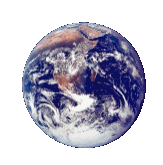|
| September 13, 2016 |
| |
An Introduction to Energy Balance,
Richard McGehee, School of Mathematics |
| |
|
Earth's global mean surface temperature can be estimated using elementary physics: conservation of energy and the theory of black body radiation. |
| |
|
| September 20, 2016 |
| |
An Introduction to Budyko's Equation,
Richard McGehee, School of Mathematics |
| |
|
Budyko's equation of energy balance predicts the existence of stable ice caps for Earth's current climate. |
| |
|
| September 27, 2016 |
| |
Huybers' Model of Glacial Cycles,
Somyi Baek, School of Mathematics |
| |
|
In a 2007 paper, Huybers introduced a simple model exhibiting the changes in amplitude and frequency seen in the climate record (the mid-Pleistocne transition). |
| |
|
| October 4, 2016 |
| |
Huybers' Identification of Deglaciations,
Cameron Thieme, School of Mathematics |
| |
|
Huybers introduced a computer algorithm to automatically pick out deglaciations from paleoclimate data. There are problems with using the algorithm on alternate data sets and on data sets from different geologic times. |
| |
|
| October 11, 2016 |
| |
Huybers' Model as a Filippov System,
Somyi Baek, School of Mathematics |
| |
|
Huybers' model can be viewed as Filippov system with a discontinuity boundary containing crossing regions as well as both attracting and repelling sliding regions. |
| |
|
| October 18, 2016 |
| |
Diffusive heat transport in the Budyko-Widiasih climate model,
Jim Walsh, Oberlin College |
| |
|
We consider Budyko's energy balance climate model with diffusive heat transport, coupled to Widiasih's ice line equation. We incorporate an albedo function appropriate for the extensive glacial episodes of the Neoproterozoic Era. We show that an approximating system of ODE exhibits a stable climate state with the ice line in tropical latitudes, provided the ice line moves slowly enough. With water remaining ice free about the equator, this Jormungand climate state has been proposed as an alternative to a snowball Earth. |
| |
|
| October 25, 2016 |
| |
Modeling species-environment interactions with limited information,
Adam Clark, Department of Ecology, Evolution, and Behavior |
| |
|
Though there is an abundant literature of mechanism-driven models describing various ecological and environmental processes, a perennial problem of applying these models to real-world systems is the scarcity of data. I will discuss a simplified resource competition model that we have used to predict species abundance in diverse prairie plant communities at the Cedar Creek Ecosystem Science Reserve in Bethel, MN. A major advantage of this model is that it can be parameterized using simple measurements taken in experimentally planted monocultures, yet makes accurate predictions about outcomes in diverse mixtures. To make these predictions, we take advantage of information from empirically observed tradeoffs among species functional traits, which helps constrain parameter estimates and improves model fit. I will also discuss ongoing efforts to extend the range of conditions across which this model is able to make accurate predictions, which could be useful for projecting impacts of environmental changes across unprecedented spatial and temporal scales. |
| |
|
| November 1, 2016 |
| |
Canard Behavior in Rate-Induced Tipping,
Jon Hahn, School of Mathematics |
| |
|
| November 15, 2016 |
| |
Carbon Isotopes and the Earth's Carbon Cycle I,
Alice Nadeau, School of Mathematics |
| |
|
A mathematical technique for determining proporties of sources and sinks of atmospheric carbon is developed. |
| November 22, 2016 |
| |
Interpreting Huybers’ Model as a Filippov System,
Somyi Baek, School of Mathematics |
| |
|
|
| |
|
| November 29, 2016 |
| |
Carbon Isotopes and the Earth's Carbon Cycle II,
Alice Nadeau, School of Mathematics |
| |
|
What has happened to the carbon released into the atmosphere through fossil fuel consumption? |
| |
|
|
